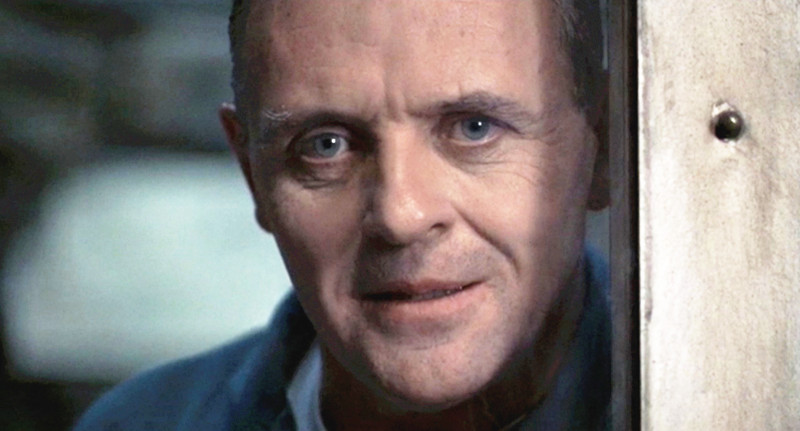
The ‘90s were a transitional time within the horror genre. Despite being known as a peaceful decade, the advent of the internet and cable television exposed audiences to real-life issues like never before. With no cold war hanging over America and technology reaching the beginning of a new era, the ‘90s were a period of increased awareness and cultural introspection. With this newfound introspection came art that reflected out more intense understanding of the world. Art became edgier. Rap songs became more explicit. Television was being flooded with sitcoms that pushed boundaries.
But while most artforms seemed to find a bold new direction to go into, horror was left to sort itself out in a time where the MPAA was cracking down on gore. Major genre staples like Nightmare on Elm Street, Friday the 13th, and Halloween were running on fumes with late installments that are regarded as some of the worst entries in their respective franchises. The large influx of slashers in the ‘80s led to fatigue within the genre by the time the new decade rolled around. As the golden age of horror came to a close, it was going to take more than killer dolls and doofuses in masks to scare people.
Through the trial and error period though, some new trends began to emerge. The genre’s focus shifted from over-the-top slashers to more plausible scenarios. A sense of gritty realism and sleek, sexy teenage-oriented films permeated the horror zeitgeist. While the decade is seen by many as a rebound decade for horror, these conditions led to innovations that would change the genre forever. From the rise of Japanese horror to the emphasis on psychological trauma, these boundary-pushing flicks laid the groundwork for the new millennium. These are the ten most influential ‘90s horror movies.
1. Silence of the Lambs (1991)
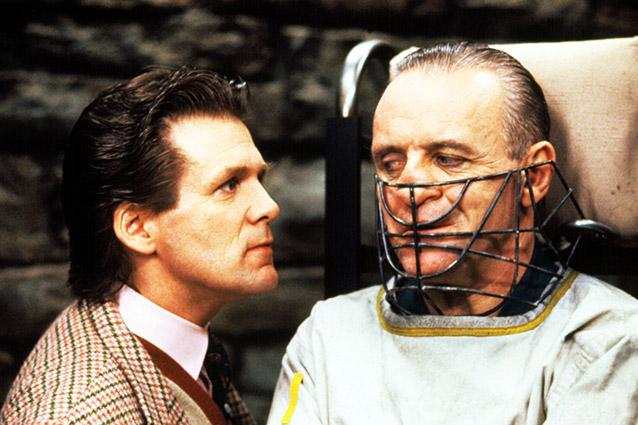
It’s hard to overstate the legacy that Silence of the Lambs left behind. While many would point to The Shining as the birth of prestige horror, Silence of the Lambs transformed the public perception of horror. It was the first horror film to win the five major Academy Award categories (Best Picture, Best Director, Best Actor, Best Actress, Best Screenplay) and was only the third film to do so. The film is career-defining for both Jodie Foster and Anthony Hopkins, with the latter winning the best actor Oscar despite being only on screen for 16 minutes.
As a result, the film is celebrated as one of the greatest films of all time. In large part, thai is due to the film having one of the scariest villains of all time. While the ‘80s saw a slew of silent hulking killers and wisecracking monsters, Hannibal Lector represented a different kind of villain. He was intelligent, cold, and calculating. He had refined tastes, and the ability to manipulate those around him. He got inside his victim’s head, first psychologically, and then literally. These characteristics marked a trend in more restrained and meticulous killers. Other films like Se7en, Saw, American Psycho, and Secret Window began to follow suit.
However, this led to a split within the cultural conversation surrounding horror. Many refused to acknowledge Silence of the Lambs as a horror film, opting to label it as a psychological thriller. This split in perception illuminates the growing pains of horror in the ‘90s. There was such a severe shift away from the camp and excess of the ‘80s, that many took umbrage with the two types of films being lumped in together.
The hybrid horror/thriller genre is now very common as bending has become the norm rather than the exception. The influx of realistic horror films like Silence of the Lambs was reflective of the increased awareness of real-world trauma we experienced in the ‘90s The desire to see the horrors of our world reflected in our movies resonated with many people and Silence of the Lambs came in at the perfect time to open the door for countless other films to embrace the reality of our world.
2. Scream (1996)
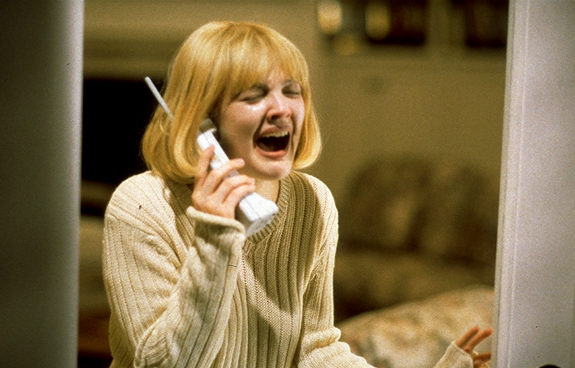
Released in a time where respect for the average slasher was at an all-time low, Scream managed to do something that at the time was unthinkable. It singlehandedly revitalized the slasher genre by making fun of it. By the mid-90s, the majority of slasher films were either straight-to-video releases or poorly received sequels to franchises that had worn out their welcome. Director Wes Craven, who was trying to distance himself from the genre at the time, decided to take on Scream when he found out Drew Barrymore had joined the cast. He reasoned that there must have been something special about the script if an established actress wanted to be a part of it.
As history would vindicate, the film is a unique take on the slasher genre that combines genuine scares with a self-aware script. Given the over-exposure to slasher films, audiences had begun to grow weary of the cliches that plagued the genre. Scream used this to its advantage by writing in characters who were horror fans themselves. They openly discussed horror tropes and the possibility that they were in a horror movie.
Audiences were stunned to have a horror movie that was aware of the criticisms often lobbed at other horror movies. It was like the movie itself was winking at the audience. The instant success of this gimmick affected the genre both in the short and long term. There was an immediate revitalized interest in slashers films. Many companies tried to cash in on the success of Scream, leading to such movies as I Know What you Did Last Summer, Final Destination, Urban Legend, and Cherry Falls. However, the impact on horror at large is decade-spanning. While horror-comedy had certainly been done before, this specific blend of meta-horror can be seen in modern films like Cabin in the Woods and You’re Next. The advent of Scream set the bar higher for the slasher genre as a whole. Once the predictable tropes were called out, newer horror films had to rise to the challenge of finding new ways to innovate the story and scare viewers.
In this way, Scream killed off the slasher genre as we know it and breathed new life into it. In mocking the well-worn slasher tropes, it also vindicated them and reminded us why we like horror movies in the first place. Scream carved out new space for scary flicks to experiment with subverting horror tropes and blend comedy into their movies.
3. Ringu (1998)
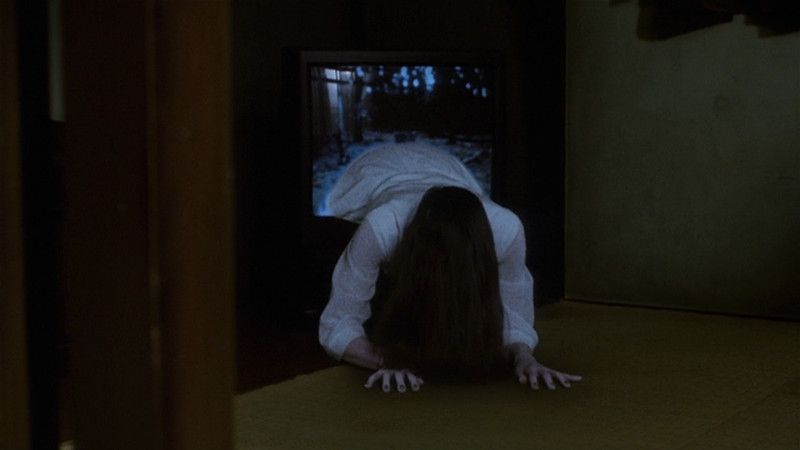
During a period in time where Japan was at the forefront of technological advancement, a group of Japanese horror filmmakers reflected technological anxiety back at audiences in with the JHorror movement. JHorror used sound design and modern technology to highlight the anxiety associated with our modern world. The term J-Horror was coined by British distributor Tartan Films, who would play a major part in Japanese horror films gaining popularity in America. Perhaps the most popular of these films is Ringu.
Ringu started a phenomenon with its simple, unique premise. There’s a videotape that will kill you seven days after watching it. The pitch was intriguing, an urban legend that could pass easily between children on a playground. The movie was an instant success, becoming Japan’s highest-grossing horror film of all time. The movie was released to American home video later that year, where it gained traction. Americans were intrigued by the traditional Japanese horror archetypes present in the film. But they could also relate to it because these archetypes presented themselves in a modern setting, surrounded by technology.
This led to America eventually creating a remake of the film in 2002, known as The Ring. After the success of the remake, Americans began plundering J-Horror to remake anything and everything for American audiences. The early 2000s saw films like Dark Water, The Grudge, The Eye, One Missed Call, and Pulse try to replicate the success of The Ring. The trend of remaking J-Horror was short-lived ultimately, but Ringu itself was one of the most significant cases of a foreign film reaching American audiences and radically changing the industry.
To this day, the concept of using new technology as a haunted object keeps popping up, with films like Unfriended, Gamerbox 10, and The Den continuing to explore the themes of technological anxiety expressed through new innovations.
4. Candyman (1992)
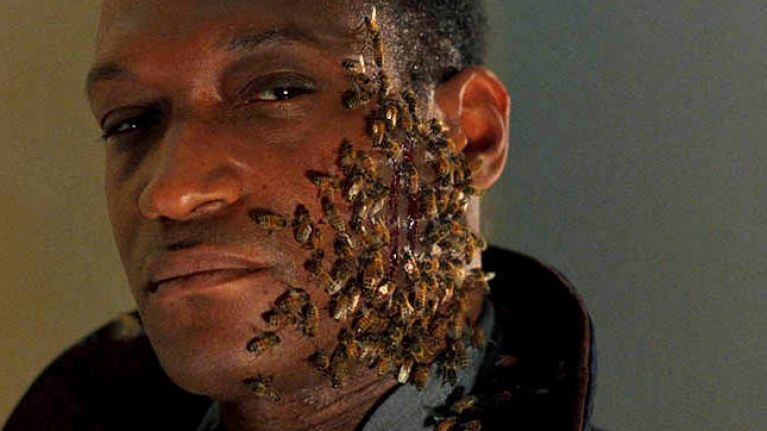
Say his name five times. When Candyman came into theaters, it was during a period in which information was traveling faster than ever before. With the birth of the internet and the availability of cable TV, urban legends were spreading by wildfire. This was at a time where news segments were warning parents that people were poisoning Halloween candy and stories about a gang luring a boy into a washroom to mutilate him were repeated ad-nauseam.
Candyman embodied the proliferation of local mythology by pulling on both “real” urban legends as well as schoolyard myths like Bloody Mary and the Hookhanded Man to create a character that felt willed into existence by fear-mongering. Combining these fanatical elements with real-world issues like gentrification, the legacy of slavery, and generational trauma, Candyman has become a fixture in pop culture.
In retrospect, the character of Candyman becoming an icon himself is a tad ironic, but it’s to be expected. Tony Todd’s commanding performance has made Candyman is so evocative that his presence is felt throughout the entire film, even when he’s not present. It’s the type of iconic performance that defines a film, and makes Candyman a legend in his own right. The film spawned three sequels, with the most recent installation being one of the most talked-about horror movies of 2021. Filmmaker Jordan Peele, who co-wrote and produced the 2021 Candyman installment, stated that the influence Candyman has on him was “seismic”. Many view Candyman as a precursor for movies like Get Out, as the films share many similarities in theme and craft.
The direct way Candyman dealt with real-life issues was a perfect encapsulation of the trend ‘90s horror films took. The movie directly explored the link between fictional horror and real-world horror, leading to a small movement of films like Se7en, In the Mouth of Madness, and Wes Craven’s New Nightmare that also explored these themes.
5. Funny Games (1997)
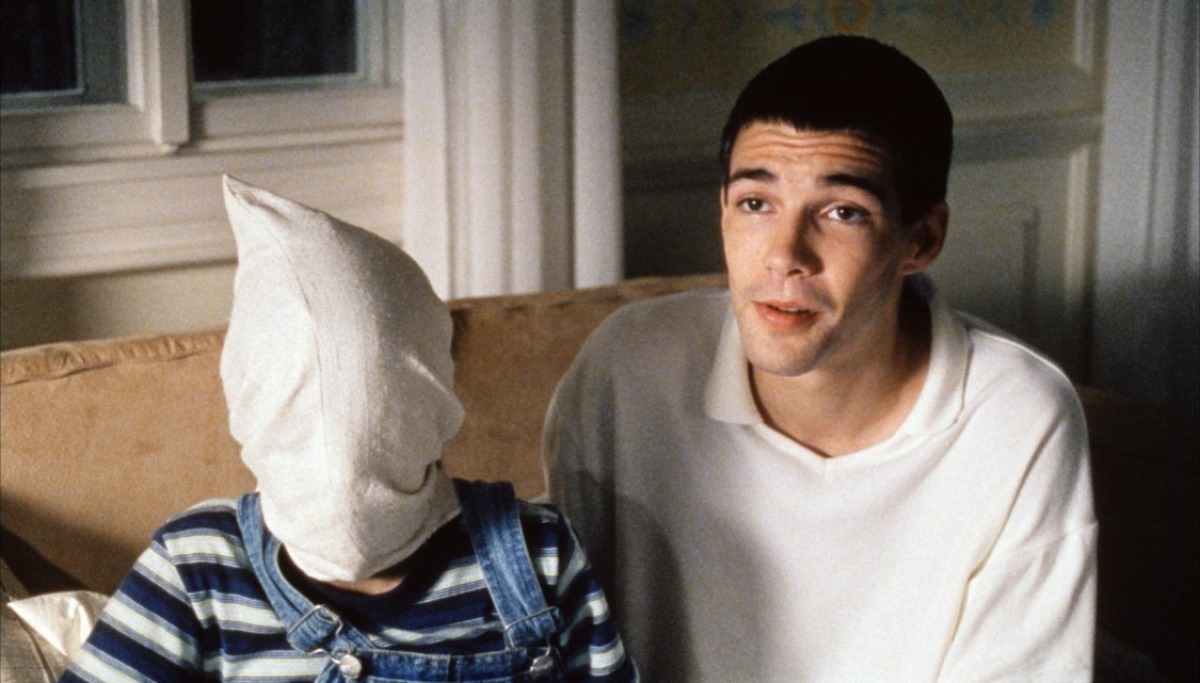
Horror films are often in conversation with each other. Much like Scream, Austrian director Michael Haneke created Funny Games to comment on current trends in American filmmaking. However, unlike Scream, Funny Games had no interest in entertaining the audience or making them laugh. The film instead sought to scold audiences and make them consider the very notion of violence in media.
The film follows a wealthy family on holiday at their vacation home. Shortly after arriving, they are plagued by two increasingly aggressive neighbors named Peter and Paul. After spending a significant time annoying the family, the two neighbors escalate and take the family hostage, subjecting them to sadistic games.
Though Haneke maintains that he was never intending to explicitly make a horror film, the film stands as a direct response to the home invasion genre. The movie uses an unsatisfying plot, fourth wall breaks, and meta-commentary to create an intentionally frustrating filmgoing experience with no catharsis. This type of merciless deconstruction would become present in other auteur filmmakers like Gaspar Noe and Lars Von Trier. Their respective films Irreversible and Antichrist also deconstruct the horror genre, while delivering something disturbing in their own right.
The deconstruction present in Funny Games helped strengthen the same trend for artistic horror films that Scream established with commercial slashers. They both forced the audience to consider their participation in the horror experience and examine why they enjoyed it so much. These ideas would bleed into the genre over the years as countless other films would attempt their own genre commentary. Movies like Tucker and Dale Vs. Evil, Behind the Mask: The Rise of Leslie Vernon and Cabin in the Woods would continue this brand of audience criticism, as they played on the audience’s preconceived notions about horror only to subvert them, and in the process, ask them to consider why they have these expectations in the first place.